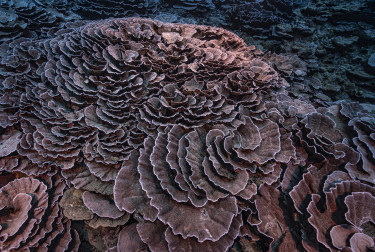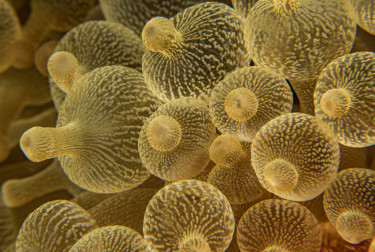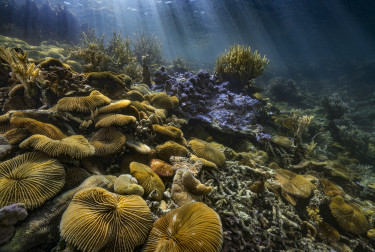Photos : Alexis Rosenfeld
Texte : Katerina Markelova, UNESCO
C’est un des plus grands récifs coralliens au monde, qui déploie ses fleurs et ses dentelles de calcaire sur près de trois kilomètres de long. L’un des plus profonds aussi. Ce trésor sous-marin était connu de longue date des pêcheurs locaux, mais on n’en soupçonnait pas l’étendue. L’explorateur et photographe français Alexis Rosenfeld, qui a exploré le récif au cours d’une mission conduite en 2021 avec le soutien de l’UNESCO, livre de ce paysage marin des images exceptionnelles.
Contrairement à de nombreux autres champs de corail, celui-ci a échappé au blanchiment. Près de la moitié des écosystèmes coralliens ont en effet disparu depuis les années 1870, en raison du changement climatique, de la surpêche et de la pollution. Parmi ceux qui ont subsisté, un tiers sont menacés d’extinction.
Il s’agit d’une estimation car seuls 20 % des fonds marins sont connus. C’est la raison pour laquelle l’UNESCO s’est engagée à cartographier au moins 80 % du plancher océanique d’ici à 2030. L’approfondissement de nos connaissances des fonds marins permettra peut-être de mettre au jour l’existence d’autres écosystèmes capables de s’adapter à l’élévation de la température de l’océan.


















